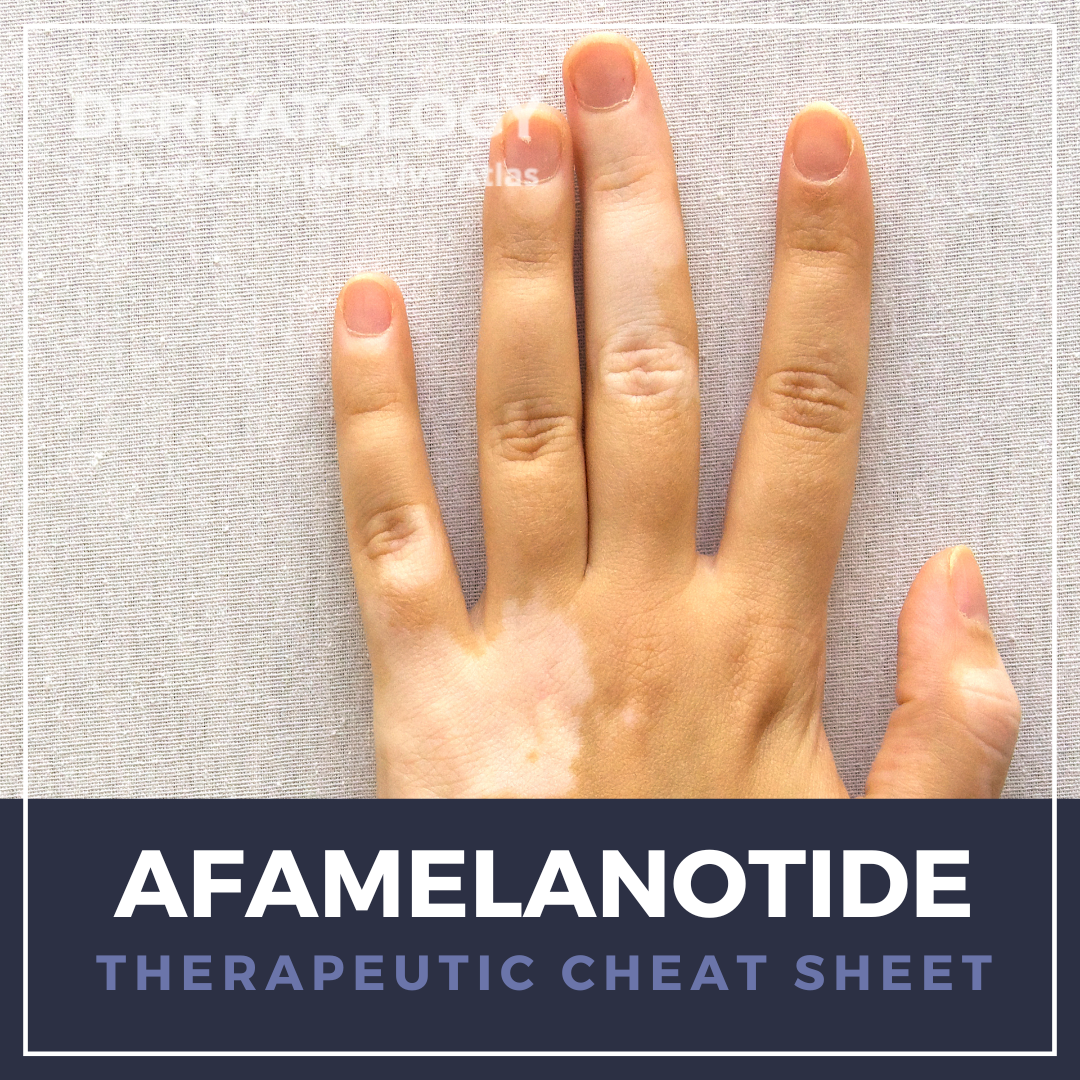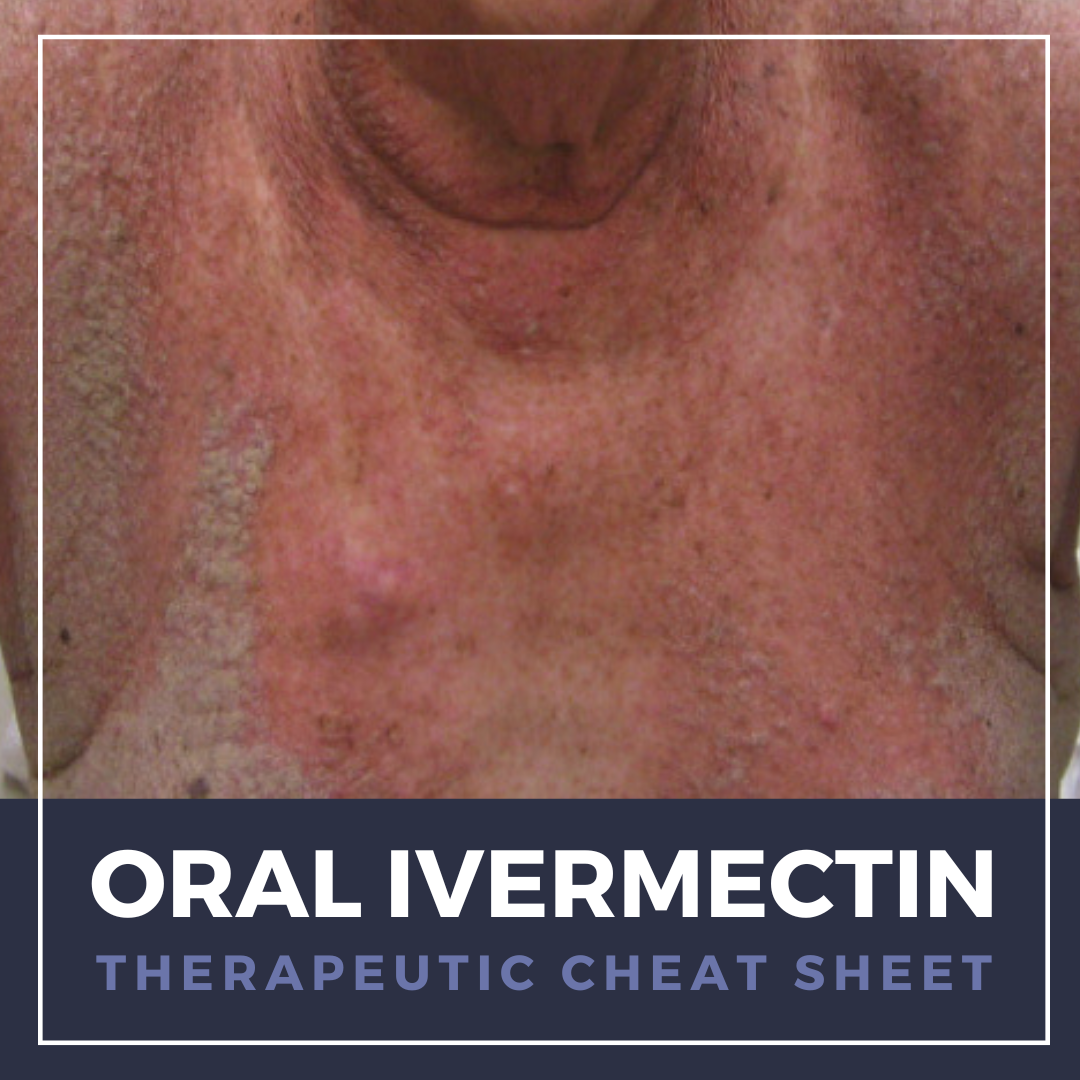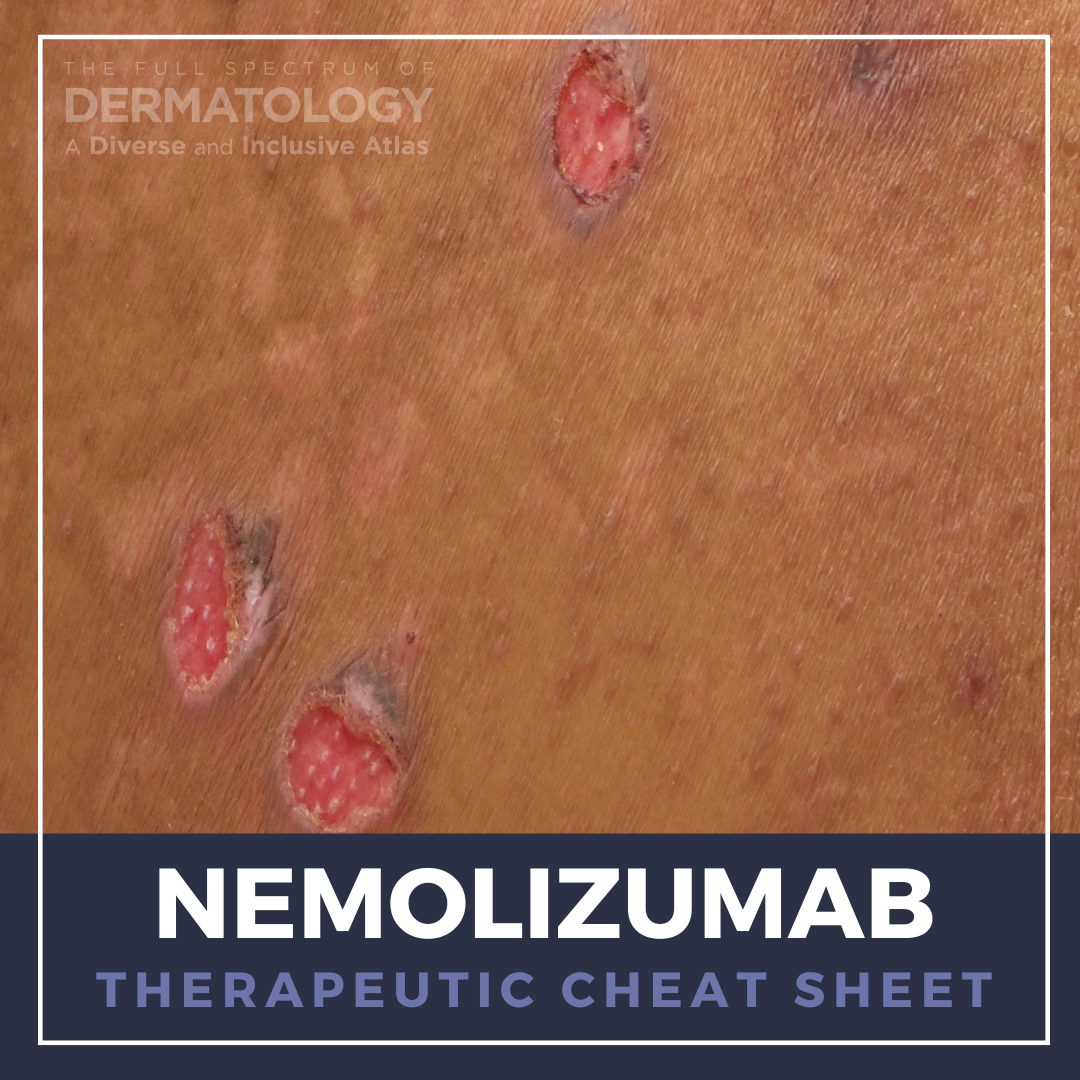Afamelanotide Therapeutic Cheat Sheet
 Photosensitive skin conditions can result in cutaneous and systemic symptoms that can have a marked effect on quality of life due to ubiquitous UV exposure. Erythropoietic protoporphyria, for example, can cause severe photodermatitis, excruciating burning and neuropathic pain, nausea, and deep-rooted fear of sunlight that leads to debilitating lifestyle modifications such as remaining indoors. We …
Photosensitive skin conditions can result in cutaneous and systemic symptoms that can have a marked effect on quality of life due to ubiquitous UV exposure. Erythropoietic protoporphyria, for example, can cause severe photodermatitis, excruciating burning and neuropathic pain, nausea, and deep-rooted fear of sunlight that leads to debilitating lifestyle modifications such as remaining indoors. We …
 Photosensitive skin conditions can result in cutaneous and systemic symptoms that can have a marked effect on quality of life due to ubiquitous UV exposure. Erythropoietic protoporphyria, for example, can cause severe photodermatitis, excruciating burning and neuropathic pain, nausea, and deep-rooted fear of sunlight that leads to debilitating lifestyle modifications such as remaining indoors. We …
Photosensitive skin conditions can result in cutaneous and systemic symptoms that can have a marked effect on quality of life due to ubiquitous UV exposure. Erythropoietic protoporphyria, for example, can cause severe photodermatitis, excruciating burning and neuropathic pain, nausea, and deep-rooted fear of sunlight that leads to debilitating lifestyle modifications such as remaining indoors. We … 

 Colchicine, a microtubule polymerization inhibitor, was first described for use in treating joint pain and swelling in ancient Egypt and has since become a mainstay in the medical management of gout. Beyond its indicated uses, it has numerous off-label dermatologic applications, particularly for neutrophilic and autoimmune conditions. As a potent anti-inflammatory, colchicine requires careful lab …
Colchicine, a microtubule polymerization inhibitor, was first described for use in treating joint pain and swelling in ancient Egypt and has since become a mainstay in the medical management of gout. Beyond its indicated uses, it has numerous off-label dermatologic applications, particularly for neutrophilic and autoimmune conditions. As a potent anti-inflammatory, colchicine requires careful lab …  Ivermectin is a semi-synthetic derivative of avermectins, a class of macrocyclic lactones with broad-spectrum anti-parasitic effects. Its unique mechanism of action, favorable safety profile, and anti-inflammatory properties make ivermectin invaluable in the treatment of a wide range of cutaneous parasitic infestations, including scabies. We continue our series, Therapeutic Cheat Sheet, with a cl …
Ivermectin is a semi-synthetic derivative of avermectins, a class of macrocyclic lactones with broad-spectrum anti-parasitic effects. Its unique mechanism of action, favorable safety profile, and anti-inflammatory properties make ivermectin invaluable in the treatment of a wide range of cutaneous parasitic infestations, including scabies. We continue our series, Therapeutic Cheat Sheet, with a cl …  Atopic dermatitis and prurigo nodularis are chronic, life-altering diseases with a common feature of debilitating pruritus that significantly impacts our patients’ qualities of life. For those with resistant and extensive disease, dermatologists now have nemolizumab in our armamentarium, the first FDA approved IL-31 inhibitor. We continue our series, Therapeutic Cheat Sheet, with a closer look a …
Atopic dermatitis and prurigo nodularis are chronic, life-altering diseases with a common feature of debilitating pruritus that significantly impacts our patients’ qualities of life. For those with resistant and extensive disease, dermatologists now have nemolizumab in our armamentarium, the first FDA approved IL-31 inhibitor. We continue our series, Therapeutic Cheat Sheet, with a closer look a …  Welcome to the first issue of the Journal of Drugs in Dermatology for 2025! This issues focuses on the exciting advancements in aesthetic treatments, with editor’s picks that delve into cutting-edge topics shaping dermatology today. From the role of exosomes in cosmetic dermatology to expert insights on managing neuromodulator complications, this issue offers invaluable guidance for pr …
Welcome to the first issue of the Journal of Drugs in Dermatology for 2025! This issues focuses on the exciting advancements in aesthetic treatments, with editor’s picks that delve into cutting-edge topics shaping dermatology today. From the role of exosomes in cosmetic dermatology to expert insights on managing neuromodulator complications, this issue offers invaluable guidance for pr …